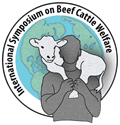Euthanasia Techniques
Admittedly a hard subject to discuss, humane euthanasia techniques provide veterinarians and other animal caregivers the means to provide "good death.'
MANHATTAN, Kan. (May 21, 2010) — Jan Shearer, professor and Extension veterinarian at Iowa State University, acknowledged at the beginning of his presentation on humane euthanasia that the subject itself is difficult to discuss. In his opening remarks at the International Symposium on Beef Cattle Welfare at Kansas State University (K-State) May 21, Shearer said he has to be in the right frame of mind to even talk about it at times.
“I characterize it sometimes as one of the easiest procedures to perform, but one of the most difficult things to do,” he explained. Shearer said most cattle owners have a lot of difficulty euthanizing their own animals, and, because of that, it is not being done in a timely manner, which makes it important for veterinarians to accept the role.
He realizes that many students in veterinary programs consider themselves healers and not executioners, but he says it’s not realistic for them to think of themselves operating outside of the veterinary oath, which centers on the “relief of animal suffering.”
Shearer said once those students are actually practicing veterinarians, they will find that there are some conditions in animals, originating from injury or illness, that cause excruciating pain and/or horrible suffering that can’t be relieved any other way than through euthanasia.
Shearer also acknowledged that a discussion of humane euthanasia wouldn’t be necessary if animals were not sentient and conscious beings, capable of perceiving pain and feeling fear and distress. He said he can remember a time when people questioned whether animals were sentient, but he has never done so, and he wanted the symposium attendees to understand why a discussion of humane euthanasia was needed.
“The objective of humane euthanasia is ‘a good death,’ whereby life is ended without causing pain or distress to the animal,” Shearer said. “Euthanasia requires techniques that induce an immediate loss of consciousness followed by cardiac and respiratory arrest that results in the loss of brain function and death.”
Shearer discussed two techniques, firearms and penetrating captive bolt systems with a secondary kill step (injections, exsanguination and pithing), along with anatomical site selection. Shearer said anecdotal evidence suggests that the traditional preferred anatomical site in adult cattle may not be optimal.
Shearer suggested further studies were needed to find the optimum site, depending on breed and gender, along with changes in training for veterinarians.
The beef cattle welfare symposium was conducted on campus at K-State University May 19-21. For additional presentation summaries, return to the Meetings > Other Industry Meetings > News Coverage page of the API Virtual Library. For more about the symposium and an archive to the 2008 symposium, visit www.isbcw.beefcattleinstitute.org.
Editor's Note: This article was written under contract or by staff of Angus Productions Inc. (API), which claims copyright to this article. It may not be published or distributed without the express permission of API. To request reprint permission and guidelines, contact Shauna Rose Hermel, editor, at 816-383-5270.

